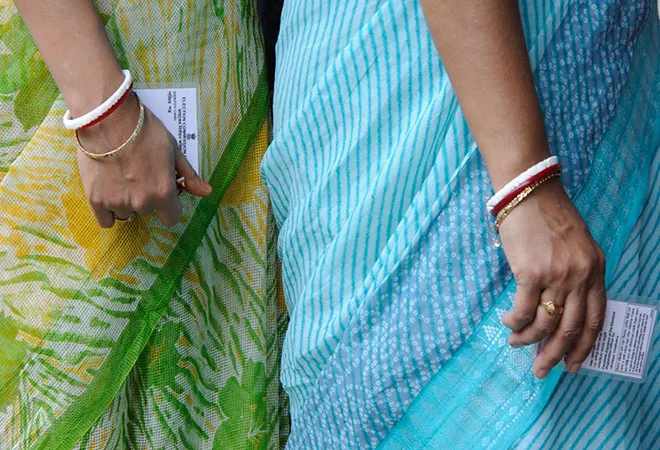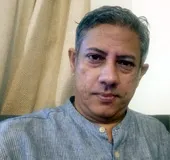
West Bengal is set to witness its 17th Assembly election in a few weeks’ time. While there is still a nip in the air in early February, the political heat is unprecedented. It can only be compared in recent history with the one in 2011, when the Communist Party of India-Marxist (CPI-M)-led government of three decades was defeated by the then challenger All India Trinamool Congress (AITC). However, in 2011, AITC was a clear favourite, whereas in 2021, a photo finish is expected despite Bengal’s record of ensuring a landslide, almost always. In 2021, the key challenger of AITC is the Bharatiya Janata Party (BJP). This piece will examine the significance of the 2021 Bengal Assembly poll.
For the ruling AITC, the key factor is to figure out if the party chief Mamata Banerjee, as yet the leading leader, is popular enough to pull the party through. Many leaders have left her, the BJP is firing on all cylinders, and allegations of low-level corruption is high. However, the allegations of corruption have failed to emerge as the central narrative as was expected, since the main accused of the multi crore Saradha Ponzy scheme scam, erstwhile AITC deputy chief Mukul Roy is presently BJP’s national vice president. In fact, the top three election managers of the BJP, namely, Mukul Roy, Suvendu Adhikari and Sovan Chatterjee — the turncoats of AITC — are all scam accused. To AITC’s advantage, it would never let the people of Bengal forget that a formidable section of tainted AITC leaders are BJP’s election managers.
Many leaders have left her, the BJP is firing on all cylinders, and allegations of low-level corruption is high.
Secondly, Ms Banerjee’s politics revolves around facilitation of subsidised benefits to all sections of society. The controversial 19th-century terminology, “populism,” best explains Ms Banerjee’s “a scheme for all” policy. From providing a small ‘funeral fund’ to free treatment for congenital diseases — there, indeed, is a policy for all. Ms Banerjee recently introduced a universal health care plan and the project has reached 76 lakh residents — seven percent of state’s population — in a short time (till 31 January) creating ripples (1). The state also hosted the maximum number of MSMEs (Medium, Small and Micro Enterprises), which is considered an achievement. All welfare measures, implemented largely through the administration, may not have worked equally well on the ground but have rarely harmed Ms Banerjee’s benefactor image.
What, however, has harmed her is a tiny subsidy to the Imams and Muezzins (prayer callers) as it is interpreted as an attempt to “appease” the minorities for votes. It consolidated the Hindu vote, as the BJP’s share of Hindu voters shot up from 21% in 2014 to 57% in 2019, pointing deep polarisation, and even displeased the Muslims for creating a divide. Realising her mistake, Ms Banerjee introduced an honorarium for the Hindu priests recently in September, 2020. The election result would indicate if it has appeased the Hindus or not.
All welfare measures, implemented largely through the administration, may not have worked equally well on the ground but have rarely harmed Ms Banerjee’s benefactor image.
But evidently the state lacks any long term serious economic plan to create jobs or boost formal sectors. This election will also indicate if the voters are content with MSME-driven slow growth and populist policies or if they are itching for robust external investments to facilitate big business driven employment in the formal sector.
Finally, it is now evident that Didi — as Ms Banerjee is usually referred to — is passing the baton to her nephew and youth wing president Abhishek Banerjee, bringing the succession battle to an end. This election would also be a mandate for not just Ms Banerjee, but Mr Banerjee as well.
For the BJP, the election in Bengal — one of only two big states, along with Kerala, which is yet to be governed by the BJP or any of its allies — is significant at two levels.
At one level, it is about an immediate political gain at a time when the party is hitting rough weathers in its core states. A victory in Bengal will be considered as a major uptick for the saffron party and, thus, it has engaged nearly all nationally important leaders to campaign in Bengal. The party is spending visibly massive funds to boost both online and offline campaigns and continues to allure AITC functionaries to join the BJP. It has its advantages and risks. The primary risk is a defeat that would possibly re-launch the political career of Mamata Banerjee, 66, who is facing a 10-year anti-incumbency. She may emerge as the key face of the anti-BJP coalition in the 2024 national Parliament election, if she can ensure her third victory in a row. However, from the BJP’s perspective, the party cannot hold its punches in Bengal — like in 2016 — and the reason is clear.
A victory in Bengal will be considered as a major uptick for the saffron party and, thus, it has engaged nearly all nationally important leaders to campaign in Bengal.
India is entering its grueling poll season from 2021. The country would witness state polls across the country from now till 2023 in the run up to the finale — the national election in 2024 — when BJP would run into a 10-year anti-incumbency. To keep the morale up in the first leg, a victory in one big state in 2021 is necessary and it has to be West Bengal as the chances of winning Tamil Nadu and Kerala in 2021 is negligible. So, the BJP’s rush for the jugular in Bengal is understandable.
At another level, it is a historic necessity for the BJP to win West Bengal. Kolkata and Bengal, in undivided India, developed “a strand” of Hindu nationalist thoughts in the 19th century, noted political scientist Asish Nandy.
“This strand (of Hindu nationalism) was relevant during and even before Banga Bhanga <1905, first Partition of Bengal> and there was an element of love for Hindu nation-state in Bengal,” Prof. Nandy said, adding that the BJP was, perhaps, trying to work on this strand. This is the first time that the BJP has had a comprehensive grip over the politics of a state which nurtured a Hindu nationalist sentiment alongside a socialist or even a Communist bent. The BJP cannot waste this historic opportunity and, hence, has decided to fight it to the finish.
This is the first time that the BJP has had a comprehensive grip over the politics of a state which nurtured a Hindu nationalist sentiment alongside a socialist or even a Communist bent.
From the economic perspective, the BJP’s victory may ensure deeper access to the ever growing market of Bangladesh and the region. Also, business engagement with south China cannot be ruled out if the BJP can confidently administer Bengal. The victory may change the geopolitical and geostrategic dynamics in the east and reshape the economic and cultural modalities in the region tapping on the enormous natural and human resources of Bengal.
Finally, the BJP’s victory would also indicate if the Muslims of Bengal — over 90 percent of whom are Bengali speaking — are agreeable to Hindu nationalism. West Bengal has more than a 25 percent Muslim population in over 50 percent of its 342 developmental blocks and over 50 percent in at least 66 (22 percent) of th blocks (2). It is nearly impossible to win Bengal without Muslim votes. To the BJP’s advantage, there are indications that a section of Muslims are deeply displeased with the AITC and may align with — if not the BJP — the Indian Secular Front (ISF), led by Abbas Siddiqui, damaging AITC.
It is nearly impossible to win Bengal without Muslim votes.
The third front has the CPI-M and Congress entering into a seat sharing arrangement, and this combine is trying to align with the ISF. If they can strike a deal, it is expected to enhance the front’s prowess to penetrate the Muslim vote base at the cost of the AITC’s. But, on the other hand, the CPI-M and the Congress may also damage the BJP, if it cuts the anti-AITC Hindu vote, which went to the BJP in the 2019 election. Simply put, if a reasonable percentage of the CPI-M’s Hindu vote returns to the CPI-M, the BJP’s Bengal adventure is over. So, while the left and the Congress do not have any real chance to win, they may damage the main players by drawing a sizeable Hindu or Muslim vote.
The election would conclusively indicate if the state prefers to align with the old formations which are local, less resourceful and more on the centre left of the political spectrum or if it is ready to tango with a new formation which is on the right but possibly capable of capital infusion in a cash strapped system, thereby, rejuvenating aspirations.
Thus, one more time, the battle for Bengal essentially remains between the left and the right.
References
i. AITC’s election strategist I-PAC’s input.
ii. Living Reality of Muslims in West Bengal — A Report. Page 145-151.
The views expressed above belong to the author(s). ORF research and analyses now available on Telegram! Click here to access our curated content — blogs, longforms and interviews.




 PREV
PREV


